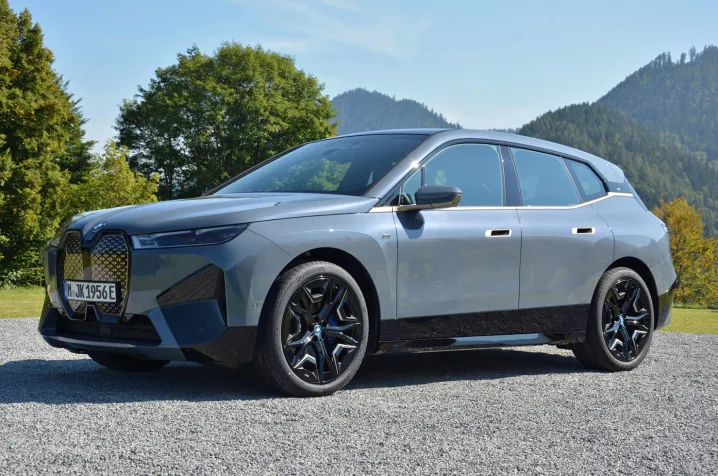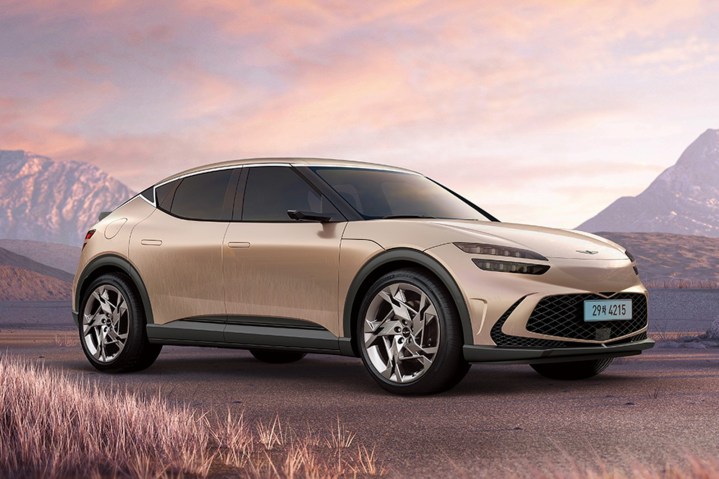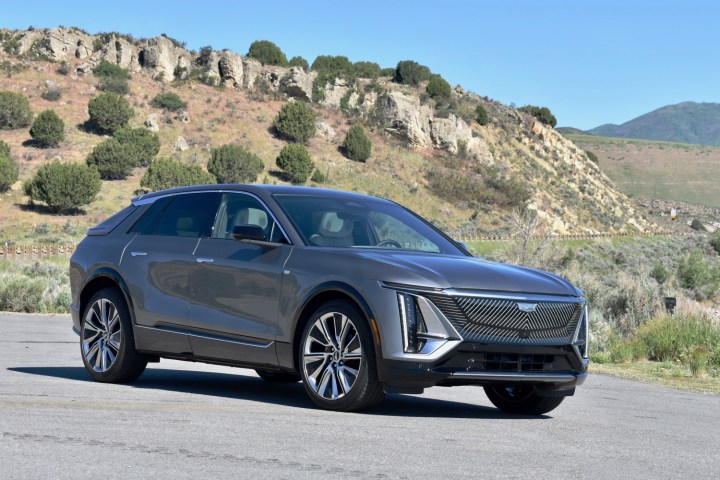There’s no denying it — the Mercedes-Benz EQS 450+ SUV is an incredible car. Sure, the exterior design isn’t for me, and the bulbous nose, while not as bad as on the standard EQS, proves that many carmakers still have no idea what to do with a grille-less design. But sit inside the car and you’re greeted with stunning finishes, beautiful build quality, modern tech, and a super-comfortable ride.
I’ve spent a week testing the EQS 450+ SUV and loved almost everything about it. It has plenty of oomph when you hit the accelerator, and while the suspension is a little mushy, it feels like you’re driving a cloud.
But then there’s the price. Luxury electric cars are known for their price, but the EQS 450+ SUV seems to go a step further, starting at $105,550, and climbing north of $130,000 in some trims. Sure, some will want to pay for that Mercedes logo and luxury interior — but if you truly want the best electric SUV experience out there, it’s probably worth looking elsewhere. Here are five stunning electric SUVs that prove you don’t need to spend crazy cash to get a great car.
Rivian R1S

If you’re looking for one of the best electric SUVs right now, and are willing to pay some cash, the Rivian R1S should be at the top of your list. The R1S isn’t necessarily as luxurious as the EQS 450+ SUV, but it easily outpaces the Mercedes in terms of the tech, battery, charging system, and more.
The design of the Rivian R1S is a little controversial, but I personally love it. It looks very modern, and I find the oval headlights on the front to look unique — in a good way.
The battery and charging tech here is excellent too. The Rivian R1S offers up to 316 miles of range, which is a little more than the already-great 305-mile range of the EQS 450+ SUV. It can charge at up to 220 kilowatts, which is a slight increase over the 200kW charging speed on offer by the EQS.
Of course, the interior of the cars is perhaps one of the biggest differences. The EQS 450+ SUV oozes luxury, however, the R1S is a little more focused on functionality. But the interior of the R1S is still supremely comfortable, with premium touches like heated seats and steering. It also offers more room, which is helpful for those who plan on adventuring a lot, or who have a family.
Starting at $91,075, the R1S is cheaper than the EQS 450+ SUV, but only if you can afford to wait. Preorders placed today aren’t expected to arrive until late 2023.
BMW iX

If you’re looking for German luxury and want a high-end SUV, then the BMW iX is the way to go. This car boasts many of the same luxurious touches as the EQS 450+ SUV, including a very comfortable interior with things like heated seating and a panoramic sunroof. On the iX, that sunroof is electrochromic, so you can enable and disable shading with the touch of a button.
The BMW iX is great as an electric car too, with over 300 miles of range, depending on the options you go for, and a charging speed of 150kW. That’s not quite as high as the EQS 450+ SUV, but should still charge your car from 20% to 80% in under 30 minutes.
The design of the BMW iX is probably on par with the EQS 450+ SUV, depending on who you ask. They’re controversial in different ways due to the large faux grille on the front of the iX, and the bulbous nose on the EQS 450+ SUV. But at a base price of $84,100, it easily beats the EQS 450+ SUV in terms of value, while still retaining a luxurious experience.
Audi e-Tron

If you’d like to save even more money on a luxury electric SUV, then the Audi e-Tron is worth considering too — though there are a few caveats. The e-Tron is interesting in that it looks like other modern Audi cars, and is not totally redesigned to look bold and futuristic. For many buyers, that’s a good thing.
The great design extends to the interior. The e-Tron offers a range of great-looking screens for infotainment and instruments, and there’s comfortable leather upholstery and a panoramic sunroof.
The e-Tron does fall a little short compared to the EQS 450+ SUV in some ways. For example, you’ll only get a range of 222 miles on the base model, which is almost 80 miles less than the Mercedes.
Genesis GV60

Next up is the Genesis GV60, a relative of the highly regarded Hyundai Ioniq 5 that is another step down in luxury compared to the EQS 450+ SUV, but still offers a great driving experience for $59,290.
I quite like the exterior design of the Genesis GV60, thanks to its stylish curves and modern look. Not everyone will love it, but I generally prefer it to the overall look of the EQS. The interior is nice too, and while certainly not as luxurious as the Mercedes option, it’s comfortable and spacious, which is very helpful.
In terms of electric car features, the GV60 can’t measure up to the EQS. It offers a range of up to 248 miles, which is quite a bit less than the EQS 450+ SUV. That said, the charging speed is up to a massive 350kW, which makes this the fastest-charging car on this list.
Cadillac Lyriq

Last but not least is the Cadillac Lyriq, which is also quite a bit cheaper than the Mercedes, starting at $62,990. The Lyriq is another car that you wouldn’t know is an EV at first glance, and it’s not necessarily the most modern-looking car out there, but it still looks great.
The interior of this car isn’t as luxurious as the EQS, but it’s still quite nice. You’ll get a huge 33-inch curved display that stretches across the front of the car for instruments and infotainment. And it’s relatively spacious, which is quite nice.
One of the best things about the Lyriq is the fact that it has a solid range, coming in at an estimated 312 miles — which is more than the EQS 450+ SUV. And, it can charge pretty quickly too, at up to 190kW, which is about on par with the EQS.
Editors' Recommendations
- One of the best values in electric SUVs comes from the last brand you’d expect
- Mercedes-Benz EQS SUV is a luxury SUV for the family


